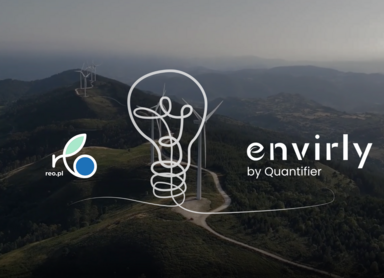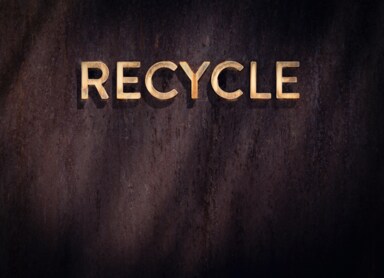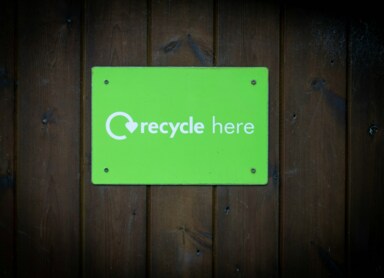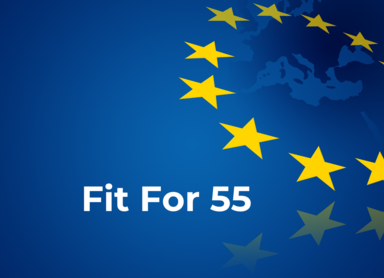Fit for 55 package - what is this climate package all about?
The Fit for 55 package is an ambitious initiative by the European Union aimed at combating climate change and achieving carbon neutrality by 2050. It includes a range of regulations and actions intended to reduce greenhouse gas emissions by at least 55% by 2030, compared to 1990 levels. The new regulations will affect many sectors of the economy, including energy, transportation, and construction, forcing member states to implement more sustainable and environmentally friendly solutions. What changes await us in the coming years, and what challenges will arise from achieving these goals?
Fit for 55 Package – What Is It and What Is Its Importance?
The Fit for 55 package is an initiative by the European Union aimed at reducing greenhouse gas emissions by 55% by 2030 compared to 1990 levels. It is part of a broader strategy known as the European Green Deal, which aims to achieve climate neutrality by 2050. The Fit for 55 package is a set of regulations and actions aimed at sustainable economic development, environmental protection, and improving the quality of life for EU citizens.
The significance of the Fit for 55 package is enormous, as climate change is one of the biggest challenges facing the modern world. Global warming, resulting from greenhouse gas emissions, leads to severe consequences such as extreme weather events, rising sea levels, and the loss of biodiversity. The actions taken as part of this package aim to counter these negative phenomena and protect future generations from the catastrophic effects of climate change.
Fit for 55 Package – What Does It Mean?
The name "Fit for 55" comes from the goal of reducing greenhouse gas emissions by 55% by 2030. As mentioned earlier, this is part of the broader EU plan to limit environmental impact and create a sustainable economy. The package includes a series of legislative proposals designed to affect various sectors of the economy, such as energy, transportation, construction, and industry.
The Fit for 55 package also means that the European Union commits to introducing new regulations and standards that will support the energy transition, promote energy efficiency, and develop renewable energy sources. It is a step toward building a future where the economy will be greener, and greenhouse gas emissions will be significantly reduced.
What Is the Fit for 55 Package? Detailed Information
What does the Fit for 55 package entail in practice? The package consists of several key elements aimed at achieving the set climate goals. The most important components include:
- Emissions Trading System (ETS): The Fit for 55 package proposes extending the existing emissions trading system, which currently applies to industry and energy, to sectors such as road transport and construction. The goal is to increase responsibility for emissions and promote the reduction of greenhouse gases.
- Increased Share of Renewable Energy: The package calls for raising the target for the share of renewable energy in the EU's energy mix. This increase is to be achieved through investments in solar, wind, and other eco-friendly energy sources.
- Improved Energy Efficiency: Another key element of the package is promoting energy efficiency in various sectors of the economy, including construction and industry. The goal is to reduce energy consumption and emissions.
- Ecological Taxes: The Fit for 55 package also introduces new ecological taxes aimed at reducing emissions by financially burdening high-emission activities. The introduction of such taxes is intended to motivate investment in low-emission technologies.
- Promotion of Sustainable Transport: Reducing emissions from the transport sector is a key goal of the package. This includes promoting electromobility, developing infrastructure for electric vehicles, and supporting public transport.
Fit for 55 Climate Package – Goals and Objectives
The Fit for 55 climate package aims to achieve several key objectives that will contribute to the realization of the European Union's climate goals. These objectives include:
- Greenhouse Gas Emission Reduction: The primary goal of the package is to reduce greenhouse gas emissions by 55% by 2030 compared to 1990 levels. This is a crucial step toward climate neutrality by 2050.
- Increase in Renewable Energy Share: The package envisions that by 2030, at least 40% of energy in the European Union will come from renewable sources. This aims to reduce dependence on fossil fuels and promote clean energy technologies.
- Improvement of Energy Efficiency: The Fit for 55 package plans to improve energy efficiency by at least 36% by 2030. Achieving this goal will reduce energy consumption and limit greenhouse gas emissions.
- Sustainable Transport: Another goal is to reduce emissions from the transport sector by promoting electric vehicles, developing charging infrastructure, and supporting public transport. This aims to reduce emissions from road, air, and maritime transport.
- Biodiversity Protection: The Fit for 55 package also aims to protect biodiversity by reducing emissions and pollution that negatively affect ecosystems. Protecting nature is a key element of sustainable development.
The Impact of the Fit for 55 Package on the Economy and Environment
The impact of the Fit for 55 package on the economy and the environment will be significant and multidimensional.
Economy:
- Innovation and Investment: The Fit for 55 package will promote innovation and investment in low-emission technologies and renewable energy sources. Businesses will have to adapt to the new regulations, leading to the development of new technologies and the creation of jobs in green energy sectors.
- Transition Costs: Introducing new regulations may involve transition costs for some sectors, especially those based on fossil fuels. Companies will need to invest in modernizing and adapting their production processes, which may entail short-term costs.
- Competitiveness: In the long term, the Fit for 55 package may increase the competitiveness of the EU economy by promoting sustainable development and innovation. Companies that can quickly adapt to new standards may gain a competitive edge in the global market.
Environment:
- Emission Reduction: The main goal of the package is a significant reduction in greenhouse gas emissions, which will help curb global warming and reduce the negative impact on the climate. Reducing emissions will have a positive effect on air quality and public health.
- Ecosystem Protection: Actions taken under the Fit for 55 package will aim to protect ecosystems and biodiversity. Reducing emissions and pollution will help preserve the natural environment and prevent ecosystem degradation.
- Sustainable Development: Promoting sustainable development is a key element of the Fit for 55 package. Investments in renewable energy sources, energy efficiency, and sustainable transport will contribute to building a greener and more environmentally friendly economy.
The Fit for 55 package is an ambitious EU initiative aimed at reducing greenhouse gas emissions, promoting sustainable development, and protecting the environment. The introduction of new regulations and standards will have a significant impact on the economy and environment, contributing to the building of a greener and more sustainable future.






![Mój Prąd 6.0 program - rules and all additional information [2025 UPDATE]](/storage/13_manny-becerra-vgf9kogcu1u-unsplash_cb32b2e7.jpg)